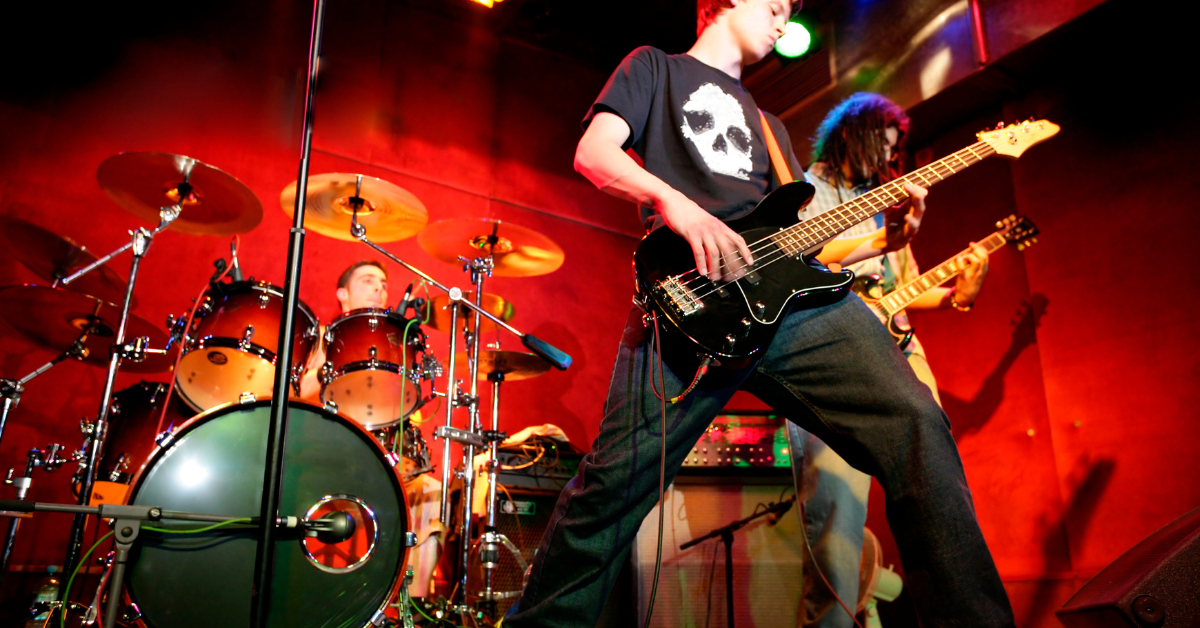Bocchi the Rock! is not just an anime—it’s a reflection of emotional isolation and the power of human connection. With a socially anxious high school girl at its center, the series captures the struggles of communication, self-worth, and personal transformation. In Japan, it received praise not only for its emotional depth but also for its stunning animation and authentic music depiction.
The Story and Setting of Bocchi the Rock!
The protagonist, Hitori Gotoh, is a painfully shy high school girl with no friends. Her only hobby is playing the guitar. Although she is famous online under the alias “Guitar Hero,” she struggles with face-to-face interaction in real life. One day, she is invited to join the all-girl band Kessoku Band after a chance encounter at a live house. Through music and the bond with her bandmates, she gradually breaks out of her shell. The setting is modeled after Tokyo’s Shimokitazawa district, known for its vibrant youth and music culture. The anime blends everyday realism with dreams, making the world feel both familiar and aspirational.
Main Characters in the Anime
| Character | Traits | Role in the Band |
|---|---|---|
| Hitori Gotoh | Shy, talented at guitar | Guitar |
| Nijika Ijichi | Cheerful, natural leader | Drums |
| Ryo Yamada | Calm, emotionally reserved | Bass |
| Ikuyo Kita | Sociable, hardworking | Guitar and Vocalist |
Why the Anime Was Highly Rated in Japan
One major reason for its popularity is the delicate depiction of character emotions. Many viewers identified with Hitori’s struggles, describing the anime as “a mirror of myself.” On social media, countless users expressed how deeply they related to her internal conflicts. The anime also features a creative visual approach: Hitori’s anxiety is often expressed through abstract, surreal imagery, offering a direct emotional connection to the viewer. Each bandmate brings her own background and personality, adding depth and authenticity to the narrative.
Elements That Went Viral on Social Media
| Topic | Description |
|---|---|
| Visual Direction | Uses artistic CG and sketches to visualize emotions |
| Realistic Dialogue | Relatable inner monologues and teenage lingo |
| Meme Culture | Hitori’s quirky behavior became a meme |
| Emotional Expression | Eye movements and pauses convey subtle shifts |
High Quality in Music and Animation
The anime is not only a strong coming-of-age story—it is also acclaimed for its technical quality in music and animation. Live performance scenes are meticulously animated, down to finger placements and body movements. The in-anime songs were composed by professionals, with lyrics reflecting the characters’ emotional states. Some tracks, such as “Guitar, Loneliness and Blue Planet,” topped real-world streaming charts. The anime’s dedication to authentic sound design and crowd reactions during concerts adds immersion and has earned praise from both anime and music communities.
Notable Songs and Highlights
| Song Title | Notable Features |
|---|---|
| Guitar, Loneliness and Blue Planet | Lyrics reflect Hitori’s emotional journey |
| If I Could Be a Constellation | Emotional and heartfelt melody |
| I Won’t Let You Forget | A moving, sorrowful composition |
| What’s So Wrong With That | A bold anthem about self-acceptance |
The Role of Social Media and Youth Culture
Soon after its broadcast, the anime saw a surge in fan activity across social media. Fan art, cosplay, and song covers flooded platforms like Twitter and TikTok. Hashtags like #ぼっちざろっく trended weekly during its airing. Hitori’s awkwardness was widely embraced by the internet community, turning her into both a relatable and comedic icon. YouTube featured many reaction and cover videos, further contributing to the anime’s spread. This dynamic, two-way relationship between the anime and its audience helped build a unique fan culture.
Factors Behind Social Media Popularity
| Platform | Activity Highlights |
|---|---|
| Twitter/X | Memes and GIFs featuring dialogue and expressions |
| TikTok | Skits and edits using Hitori’s behaviors |
| YouTube | Cover performances and reaction videos |
| Fan Events | Photos and reports from real-life anime locations |
Key Achievements in Japan
| Year | Event | Description |
|---|---|---|
| 2022 | Anime Broadcast Begins | Viewership surged rapidly among young fans |
| 2022 | In-anime Songs Released | Ranked high on streaming platforms |
| 2023 | Merchandise and Live Events | Products sold out, events reached full capacity |
| 2024 | Compilation Movie Released | Theater screening met fan demand for more |
| 2025 | Sequel Officially Announced | Media coverage and fan excitement intensified |
Why It Appeals to International Viewers
This anime’s themes—personal growth, anxiety, friendship, and self-worth—are universally relevant. Viewers around the world resonate with the internal struggles and triumphs of Hitori. Additionally, the anime offers a window into Japanese youth culture, with settings such as school festivals, club activities, and live houses authentically portrayed. Subtitled and dubbed versions make it accessible to global audiences, and some even use it as a tool for language learning. The blend of emotional universality and cultural uniqueness makes it highly attractive for foreign viewers.
Conclusion
Bocchi the Rock! is a standout anime in Japan’s modern landscape. It goes beyond entertainment to offer insight into the emotional lives of young people, resonating across cultures and generations. The combination of relatable characters, top-tier animation, powerful music, and viral social media presence propelled it to iconic status. As new content and sequels are planned, its impact is expected to grow even further. For anyone interested in Japanese anime or youth culture, this is a must-watch title that speaks a global language of emotion and self-discovery.






